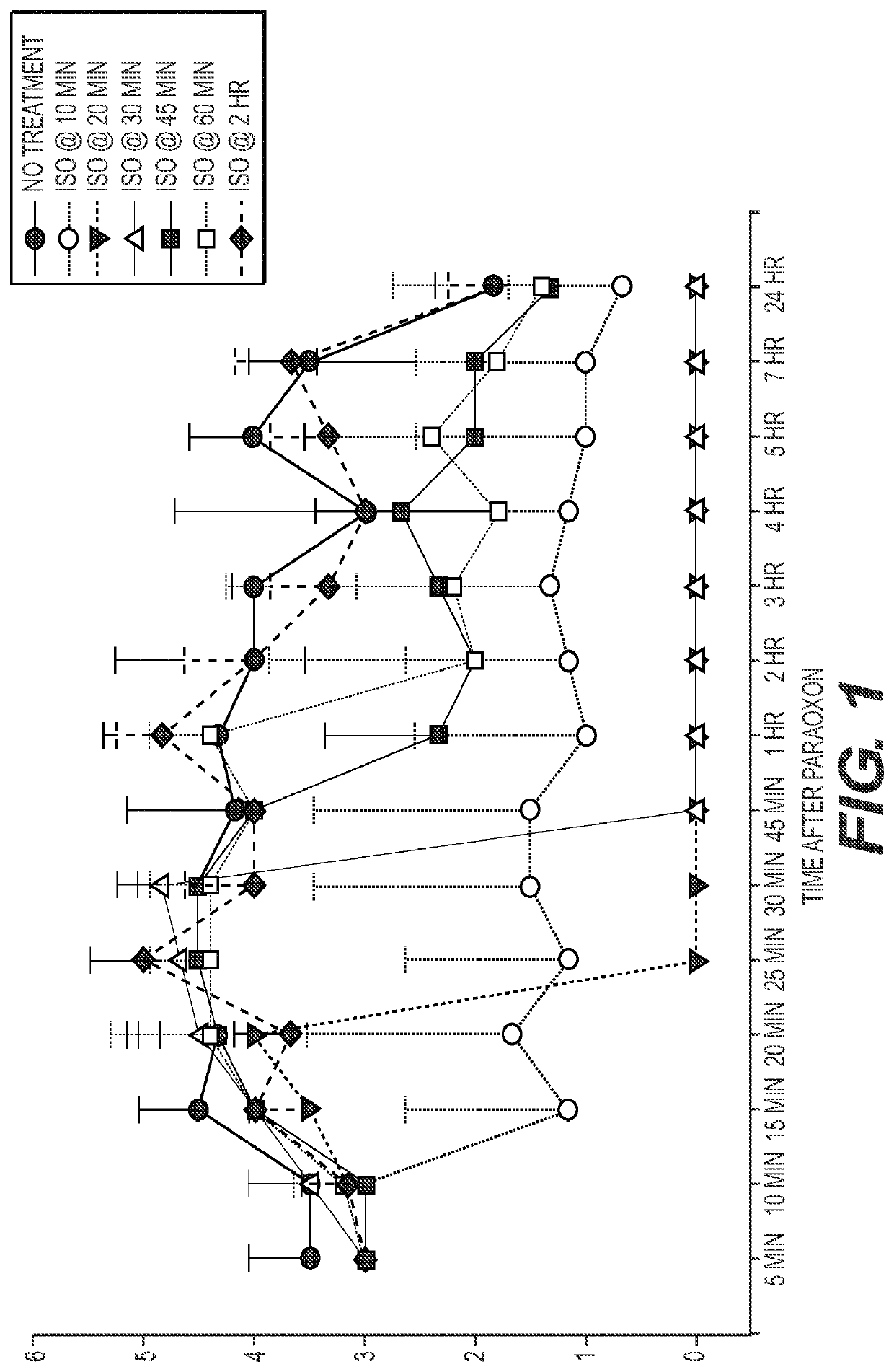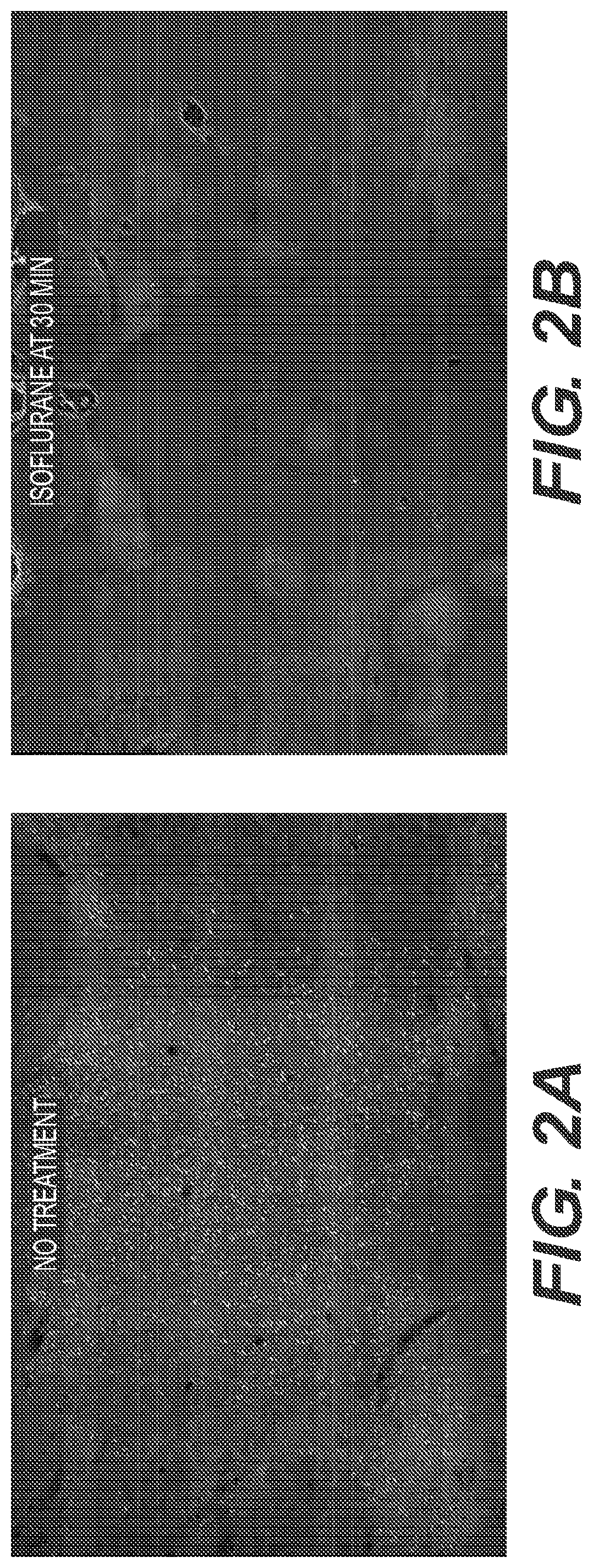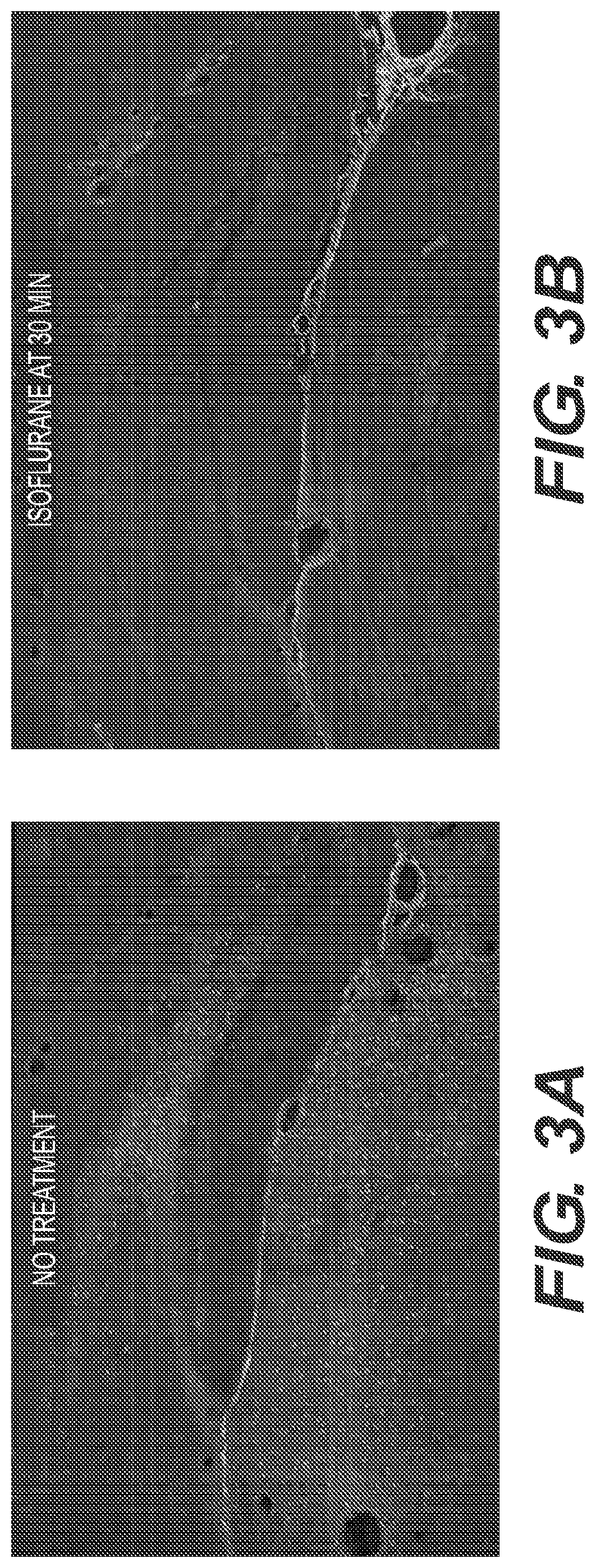Methods for treating or preventing organophosphate poisoning
a technology of organophosphate and poisoning, which is applied in the direction of anti-noxious agents, drug compositions, halogenated hydrocarbon active ingredients, etc., can solve the problems of increasing the risk of organophosphate poisoning, claiming thousands of lives per year, and worsening the situation
- Summary
- Abstract
- Description
- Claims
- Application Information
AI Technical Summary
Benefits of technology
Problems solved by technology
Method used
Image
Examples
example 1
[0041]During studies regarding the use of obidoxime (OBD) to treat organophosphate poisoning via AChE inactivation, it was discovered that isoflurane, the anesthetic used for the intranasal delivery of OBD, was very effective as a post exposure neuroprotectant. Sprague Dawley rats (250±40 g) were exposed to lethal dose of paraoxon (4 mg / kg) and were randomly assigned to control groups or isoflurane-treated groups with a time course from about 10 minutes to about 2 hours. Isoflurane treatment involved 2% isoflurane exposure for 3 minutes followed by 5% for 1 minute in 100% oxygen. Prior to isoflurane administration, all animals exhibited at least stage 3 seizures, according to modified Racine scale until they were treated with isoflurane. Post exposure isoflurane treatment decreased seizure severity significantly with the peak effectiveness observed when isoflurane was given about 30 minutes after exposure to the AChE inactivating agent.
[0042]Animals were euthanized at 24 h following...
example 2
[0046]Animals were treated 1 hour after paraoxon administration with 4%, 4.5% or 5% isoflurane in 100% oxygen for 5 minutes. Control groups were not treated with isoflurane. Animals treated with isoflurane at the 1 hour post exposure time point did not exhibit any signs of seizure activity after brief isoflurane administration and appeared to be mildly sedated for approximately 45-50 minutes after cessation of isoflurane, then displaying normal behavioral patterns afterwards (FIG. 6). Unlike the isoflurane treated groups, the untreated group continued variable seizure activity along with bleeding, lacrimation and salivation. After 24 hours the surviving untreated rats continued to show modest seizure activity and were lethargic. The animals in the isoflurane treatment groups appeared normal. In the surviving untreated control animals there was extensive neuronal degeneration 24 hours after paraoxon administration, whereas degenerating neurons were significantly reduced in the isoflu...
example 3
[0047]Time Course Study: Animals were exposed to isoflurane in an anesthesia chamber at a concentration of 2% isoflurane (Baxter) for 3 minutes followed by 5% for 1 minute in 100% oxygen at 10, 20, 30, 45, 60 or 120 minutes after paraoxon intoxication. This pattern of isoflurane administration is based on the protocol used for anesthesia in our laboratory. The control group received paraoxon, 2-PAM and atropine sulphate, but was not treated with isoflurane.
[0048]Brief administration of isoflurane (2% for 3 minutes followed by 5% for 1 minute) delivered in 100% oxygen between 10 and 120 minutes after paraoxon intoxication improved survival at all time points. The experimental groups consisted of 6 animals each, whereas the control group consisted of 11 animals to account for the expected losses due to lack of treatment. The survival rate among the animals treated with brief isoflurane administration was 100% (0 / 36; n=6 / group) as compared to the survival rate among the untreated anima...
PUM
| Property | Measurement | Unit |
|---|---|---|
| time | aaaaa | aaaaa |
| time | aaaaa | aaaaa |
| time | aaaaa | aaaaa |
Abstract
Description
Claims
Application Information
 Login to View More
Login to View More - R&D
- Intellectual Property
- Life Sciences
- Materials
- Tech Scout
- Unparalleled Data Quality
- Higher Quality Content
- 60% Fewer Hallucinations
Browse by: Latest US Patents, China's latest patents, Technical Efficacy Thesaurus, Application Domain, Technology Topic, Popular Technical Reports.
© 2025 PatSnap. All rights reserved.Legal|Privacy policy|Modern Slavery Act Transparency Statement|Sitemap|About US| Contact US: help@patsnap.com



